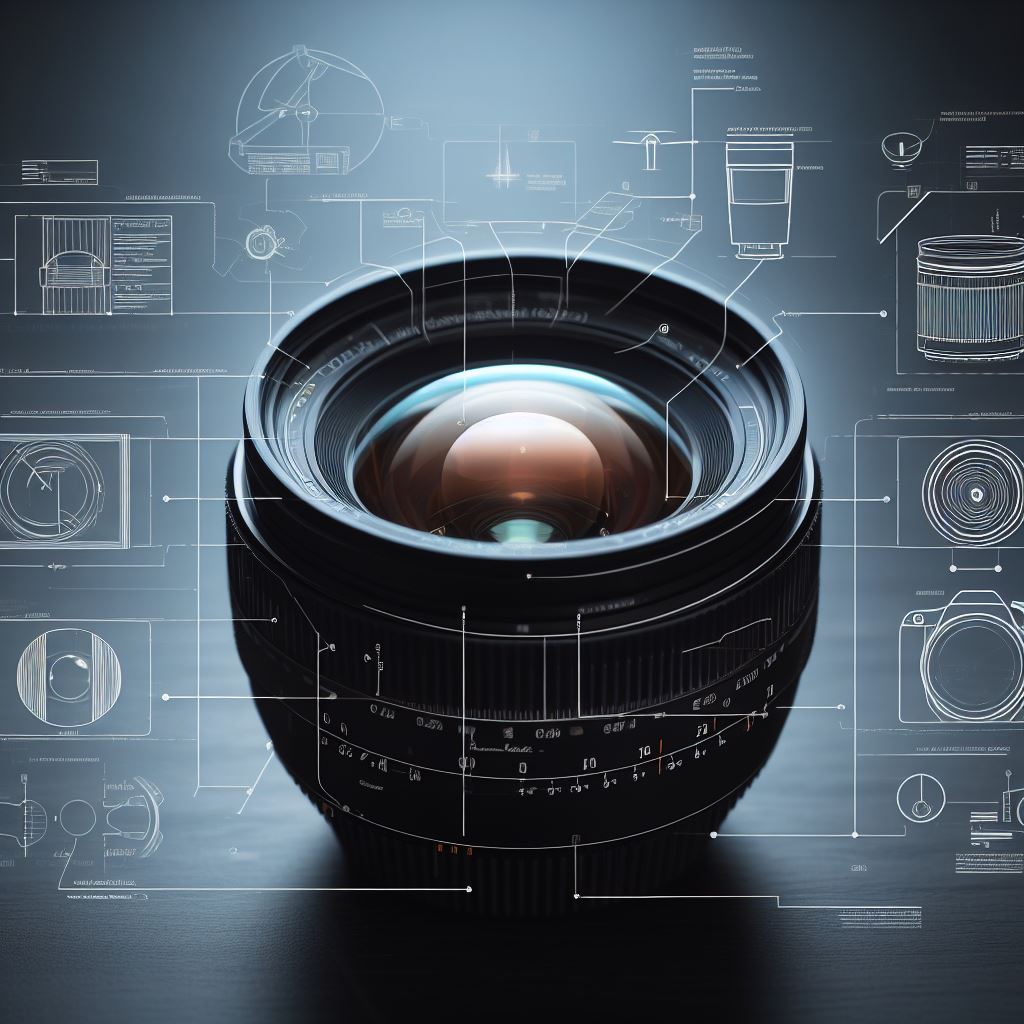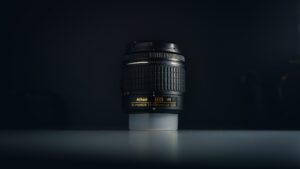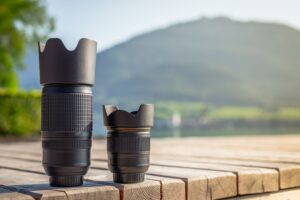If you are new to photography, you might be overwhelmed by the number of terms and concepts related to camera lenses.
What is focal length? What is aperture? What is image stabilization? How do they affect your photos?
In this article, we will explain the basic terms and concepts related to camera lenses in a simple and easy way. We will also give you some examples of how to use them in different situations and scenarios.
By learning about camera lens terms, you will be able to:
- Choose the right lens for your needs and preferences.
- Improve your image quality and avoid common problems.
- Expand your creative possibilities and experiment with different effects.
So, let’s get started!
Key Takeaways
| Term | Definition | Example |
|---|---|---|
| Focal Length | The distance between the lens and the image sensor when the subject is in focus. | A 50mm lens has a focal length of 50mm. |
| Aperture | The opening in the lens that controls how much light enters the camera. | A large aperture (low f-number) lets in more light and creates a shallow depth of field. |
| Focus | The adjustment of the lens to make the subject appear sharp and clear in the image. | Manual focus allows you to adjust the focus by turning the focus ring on the lens. |
| Image Stabilization | A feature in some lenses that reduces camera shake and blur caused by hand movements or slow shutter speeds. | Optical image stabilization uses a mechanism in the lens to counteract camera movement. |
| Lens Mount | The interface between the lens and the camera body that allows them to communicate and exchange information. | Canon EF lenses are compatible with Canon EOS cameras with an EF mount. |
| Filter Thread | The circular opening at the front of the lens that allows you to attach filters or other accessories. | A 58mm filter thread can fit filters with a diameter of 58mm. |
| Lens Hood | A device that attaches to the front of the lens to block unwanted light from entering the lens and causing flare or ghosting. | A petal-shaped lens hood is designed for wide-angle lenses to avoid vignetting. |
| Lens Coating | A thin layer of material applied to one or more surfaces of the lens elements to improve their optical performance and reduce unwanted effects. | Multi-coating reduces reflections, glare, ghosting, and chromatic aberration. |
Focal Length
One of the most important terms related to camera lenses is focal length.
Focal length is the distance between the lens and the image sensor when the subject is in focus.
Focal length affects three main aspects of your image: angle of view, magnification, and perspective.
- Angle of view: This is how much of the scene you can capture with your lens. A shorter focal length (such as 18mm) gives you a wider angle of view, which means you can fit more of the scene in your frame. A longer focal length (such as 200mm) gives you a narrower angle of view, which means you can zoom in on a specific part of the scene.
- Magnification: This is how large your subject appears in your image relative to its actual size. A longer focal length gives you more magnification, which means you can make your subject look bigger and closer. A shorter focal length gives you less magnification, which means you can make your subject look smaller and farther away.
- Perspective: This is how your subject relates to its surroundings in terms of size, shape, and distance. A longer focal length compresses the perspective, which means it makes objects appear closer together and flatter. A shorter focal length exaggerates the perspective, which means it makes objects appear farther apart and more distorted.
There are different types of lenses based on their focal length range:
- Wide-angle lenses: These are lenses with a focal length of less than 35mm (full-frame equivalent). They are ideal for capturing landscapes, architecture, interiors, group shots, etc.
- Standard lenses: These are lenses with a focal length of around 50mm (full-frame equivalent). They are versatile and suitable for various subjects, such as portraits, street photography, documentary, etc.
- Telephoto lenses: These are lenses with a focal length of more than 70mm (full-frame equivalent). They are great for capturing distant subjects, such as wildlife, sports, events, etc.
- Zoom lenses: These are lenses that allow you to change the focal length by turning a ring or pushing a button on the lens. They offer convenience and flexibility, but they may compromise on image quality and speed.
- Prime lenses: These are lenses that have a fixed focal length. They offer better image quality and speed, but they may limit your framing options.
For more information on how to choose a focal length for your needs, check out our article on what camera lens do I need.
Aperture

Another important term related to camera lenses is aperture. Aperture is the opening in the lens that controls how much light enters the camera.
Aperture affects two main aspects of your image: exposure and depth of field.
- Exposure: This is how bright or dark your image is. A larger aperture (low f-number) lets in more light and makes your image brighter. A smaller aperture (high f-number) lets in less light and makes your image darker.
- Depth of field: This is how much of your image is in focus from front to back. A larger aperture creates a shallow depth of field, which means only a small part of your image is in focus and the rest is blurry. A smaller aperture creates a deep depth of field, which means most or all of your image is in focus and sharp.
There are different types of lenses based on their maximum and minimum aperture values:
- Fast lenses: These are lenses that have a large maximum aperture (such as f/1.4 or f/2.8). They are ideal for low-light situations, such as night photography, indoor photography, etc. They also allow you to create a shallow depth of field and a smooth bokeh effect, which is the quality of the blur in the out-of-focus areas.
- Slow lenses: These are lenses that have a small maximum aperture (such as f/5.6 or f/8). They are suitable for bright situations, such as daylight photography, outdoor photography, etc. They also enable you to achieve a deep depth of field and a sharp image across the frame.
- Variable aperture lenses: These are zoom lenses that have different maximum aperture values depending on the focal length. For example, a 18-55mm f/3.5-5.6 lens has a maximum aperture of f/3.5 at 18mm and a maximum aperture of f/5.6 at 55mm. These lenses are more affordable and compact, but they may lose some light and speed when zooming in.
- Fixed aperture lenses: These are zoom lenses that have the same maximum aperture value throughout the focal length range. For example, a 24-70mm f/2.8 lens has a maximum aperture of f/2.8 at any focal length. These lenses are more expensive and bulky, but they offer consistent performance and quality when zooming in or out.
For more information on how to create blurry backgrounds with aperture, check out our article on what makes a lens good for bokeh.
Focus
Another essential term related to camera lenses is focus. Focus is the adjustment of the lens to make the subject appear sharp and clear in the image.
Focus affects the overall quality and clarity of your image. If your subject is in focus, your image will look crisp and detailed. If your subject is out of focus, your image will look blurry and fuzzy.
There are different ways to achieve focus with your lens:
- Manual focus: This is when you adjust the focus by turning the focus ring on the lens until your subject looks sharp in the viewfinder or on the LCD screen. This method gives you full control over the focus, but it may take some time and practice to master.
- Autofocus: This is when you let the camera automatically adjust the focus by using sensors and motors in the lens or the camera body. This method is faster and easier than manual focus, but it may not always be accurate or reliable.
- Focus modes: These are settings that determine how the autofocus system works, such as single-shot autofocus (AF-S), continuous autofocus (AF-C), automatic autofocus (AF-A), etc. These modes are useful for different situations and subjects, such as stationary or moving subjects, single or multiple subjects, etc.
- Focus points: These are areas on the viewfinder or LCD screen that indicate where the camera will focus when you press the shutter button halfway. You can select one or more focus points manually or let the camera choose them automatically. You can also lock the focus on a specific point by pressing a button or switch on the camera or lens.
- Focus peaking: This is a feature that highlights the edges of objects that are in focus with a color (such as red, green, or yellow) on the LCD screen or electronic viewfinder (EVF). This feature helps you to see clearly what is in focus when using manual focus or magnified view.
For more information on how lenses focus, check out our article on how do camera lenses focus.
Image Stabilization
Another useful term related to camera lenses is image stabilization. Image stabilization is a feature in some lenses that reduces camera shake and blur caused by hand movements or slow shutter speeds.
Image stabilization affects the sharpness and clarity of your image. If your image is stabilized, your image will look crisp and smooth. If your image is not stabilized, your image will look shaky and blurry.
There are different types of image stabilization available in some lenses:
- Optical image stabilization: This is when a mechanism in the lens moves one or more lens elements to counteract camera movement. This type of image stabilization is effective for both still and video shooting, and it can be seen in the viewfinder or LCD screen.
- Electronic image stabilization: This is when a software in the camera or the lens crops and shifts the image to compensate for camera movement. This type of image stabilization is mainly used for video shooting, and it may reduce the image quality or resolution.
- Hybrid image stabilization: This is when a combination of optical and electronic image stabilization is used to correct camera movement in different directions. This type of image stabilization is more advanced and can handle complex situations, such as panning or tilting.
Here is a table that compares the pros and cons of different types of image stabilization:
| Type | Pros | Cons |
|---|---|---|
| Optical | – Works for both still and video shooting. – Can be seen in the viewfinder or LCD screen. – Does not affect the image quality or resolution. | – Increases the size, weight, and cost of the lens. – May not work well with some camera bodies or mounts. – May cause some noise or vibration in the lens. |
| Electronic | – Does not increase the size, weight, or cost of the lens. – Works well with any camera body or mount. – Does not cause any noise or vibration in the lens. | – Only works for video shooting. – Cannot be seen in the viewfinder or LCD screen. – May reduce the image quality or resolution. |
| Hybrid | – Combines the benefits of optical and electronic image stabilization. – Can handle complex situations, such as panning or tilting. – Can be seen in the viewfinder or LCD screen. | – Increases the size, weight, and cost of the lens. – May not work well with some camera bodies or mounts. – May cause some noise or vibration in the lens. |
For more information on how image stabilization affects lens durability, check out our article on do camera lenses wear out.
Filter Thread
Another term related to camera lenses is filter thread. Filter thread is the circular opening at the front of the lens that allows you to attach filters or other accessories.
Filters are devices that modify the light that enters the lens and create different effects on your image. Some of the common types of filters are:
- UV filters: These are clear filters that block ultraviolet rays and protect the lens from dust, scratches, and moisture.
- Polarizing filters: These are filters that reduce glare and reflections from shiny surfaces, such as water, glass, or metal. They also enhance the contrast and saturation of colors, especially in the sky and foliage.
- Neutral density (ND) filters: These are filters that reduce the amount of light that enters the lens and allow you to use slower shutter speeds or larger apertures. They are useful for creating motion blur or shallow depth of field effects.
- Graduated neutral density (GND) filters: These are filters that have a gradual transition from dark to light and help balance the exposure between bright and dark areas of the scene. They are often used for landscape photography, such as sunrise or sunset scenes.
- Color filters: These are filters that add or subtract colors from your image and change the mood or atmosphere of the scene. They can also be used for creative effects, such as sepia, infrared, or cross-processing.
Filter thread is measured by its diameter in millimeters, such as 49mm, 58mm, 77mm, etc. You can find the filter thread size of your lens on the front of the lens or on the lens cap. You can also use a ruler or a caliper to measure it.
To attach a filter to your lens, you need to match the filter thread size of your lens and your filter. For example, if your lens has a 58mm filter thread, you need a 58mm filter.
You can also use a step-up or step-down ring to adapt a different size filter to your lens. For example, if your lens has a 58mm filter thread and your filter has a 67mm filter thread, you need a 58-67mm step-up ring.
For more information on using filters, check out our article on are lens filters necessary.
Lens Hood

A lens hood is a device that attaches to the front of the lens to block unwanted light from entering the lens and causing flare or ghosting.
Flare is a phenomenon that occurs when bright light sources, such as the sun or artificial lights, hit the lens and create streaks or spots of light in your image.
Ghosting is a phenomenon that occurs when bright light sources reflect off the lens elements and create secondary images or shapes in your image.
Lens hoods helps prevent flare and ghosting by shading the lens from stray light and improving the contrast and color saturation of your image. It also protects the lens from dust, scratches, and accidental bumps.
Lens hoods are designed according to the shape and size of the lens. There are two main types of lens hoods:
- Round lens hoods: These are cylindrical-shaped hoods that fit most lenses. They are simple and effective, but they may cause vignetting (darkening of the corners) on some wide-angle lenses.
- Petal-shaped lens hoods: These are flower-shaped hoods that have curved edges that match the angle of view of the lens. They are ideal for wide-angle lenses as they avoid vignetting and provide maximum shading.
To attach a lens hood to your lens, you need to align the mounting marks on the hood and the lens and twist them until they lock into place. You can also reverse the hood and mount it backwards on the lens for storage or transportation.
For more information on using lens hoods, check out our article on why use a lens hood.
Lens Coating
Another term related to camera lenses is lens coating. A lens coating is a thin layer of material applied to one or more surfaces of the lens elements to improve their optical performance and reduce unwanted effects.
Lens elements are glass pieces that make up the lens and bend the light that enters the camera. However, some of the light may be reflected, scattered, or refracted by the glass surfaces and cause problems such as:
- Reflections: These are mirror-like images of bright light sources that appear in your image and reduce contrast and clarity.
- Glare: This is a bright haze that covers part or all of your image and reduces contrast and color fidelity.
- Ghosting: This is similar to flare but occurs when reflections bounce off multiple glass surfaces and create secondary images or shapes in your image.
- Chromatic aberration: This is a color fringing effect that occurs when different wavelengths of light are focused at different points on the image sensor and create purple, green, or blue edges around objects in your image.
- Flare: This is similar to ghosting but occurs when bright light sources hit the lens and create streaks or spots of light in your image.
Lens coating works by reducing the amount of light that is reflected, scattered, or refracted by the glass surfaces and enhancing the amount of light that is transmitted, contrasted, and color-corrected by the glass surfaces.
There are different types of lens coating and their abbreviations used by different manufacturers, such as:
- Anti-reflection coating (AR): This is a single-layer coating that reduces reflections and glare from the glass surfaces.
- Multi-coating (MC): This is a multi-layer coating that reduces reflections, glare, ghosting, and chromatic aberration from the glass surfaces.
- Super multi-coating (SMC): This is an advanced multi-layer coating that reduces reflections, glare, ghosting, chromatic aberration, and flare from the glass surfaces.
- Nano coating (NC): This is a nano-scale coating that reduces reflections, glare, ghosting, chromatic aberration, flare, and diffraction from the glass surfaces.
Conclusion
We have covered the basic terms and concepts related to camera lenses in this article. We hope you have learned something new and useful from this guide.
By understanding camera lens terms, you can:
- Choose the right lens for your needs and preferences.
- Improve your image quality and avoid common problems.
- Expand your creative possibilities and experiment with different effects.
Of course, there is much more to learn about camera lenses than what we have covered here.
There are many other terms and concepts that you may encounter, such as distortion, aberration, diffraction, etc. There are also many other types of lenses that you may want to explore, such as macro lenses, fisheye lenses, tilt-shift lenses, etc.
If you want to learn more about camera lenses, we recommend you to check out our other articles on photographyexplorer.com, such as:
- Zoom Lenses vs Prime Lenses
- Why Do Lenses Vignette?
- How to Make the Most of Your Kit Lens
- Canon vs Nikon vs Sony vs Fujifilm
We also encourage you to practice and experiment with different lenses and settings to see how they affect your photos.
Thank you for reading this article and we hope you enjoyed it. Happy shooting!








